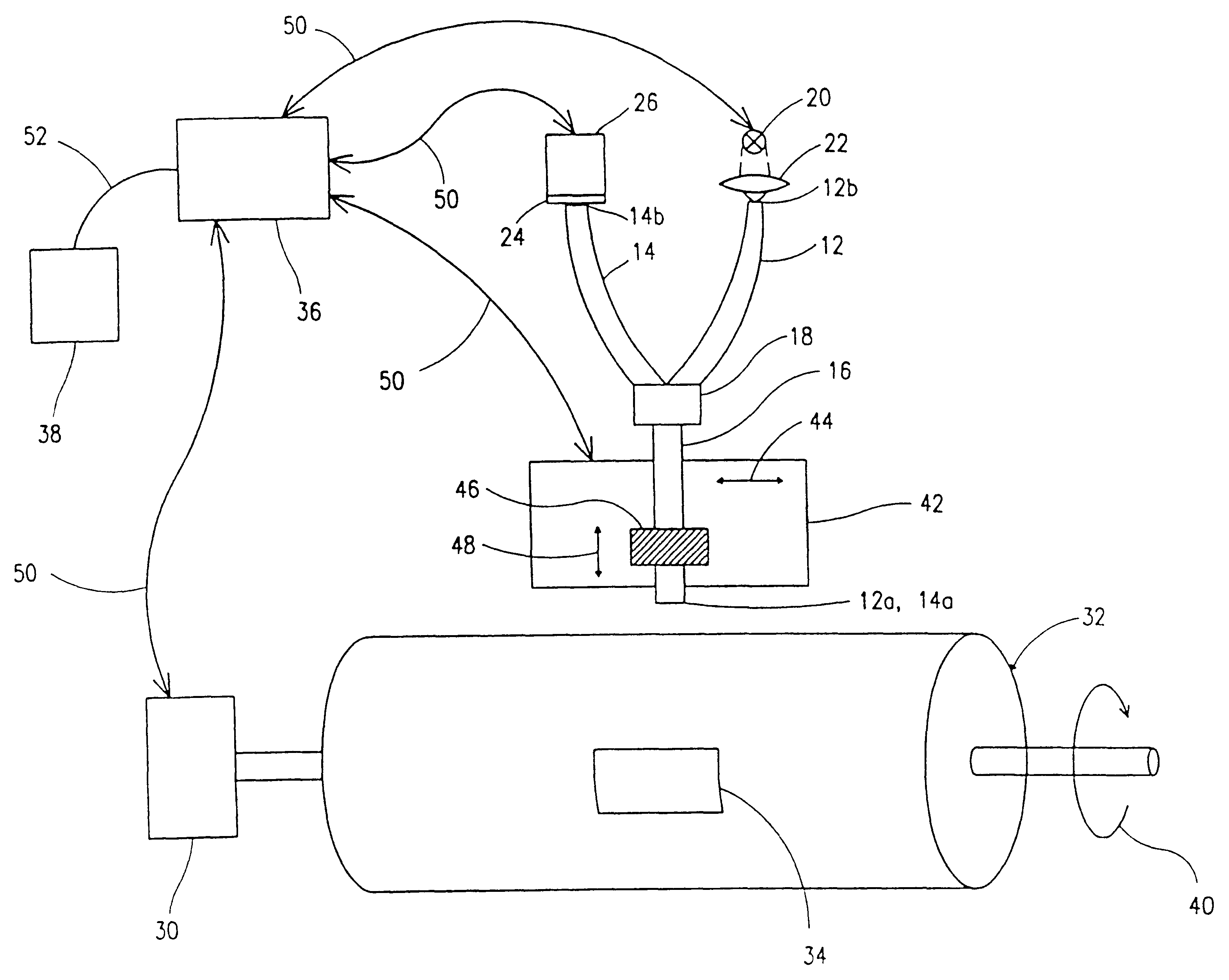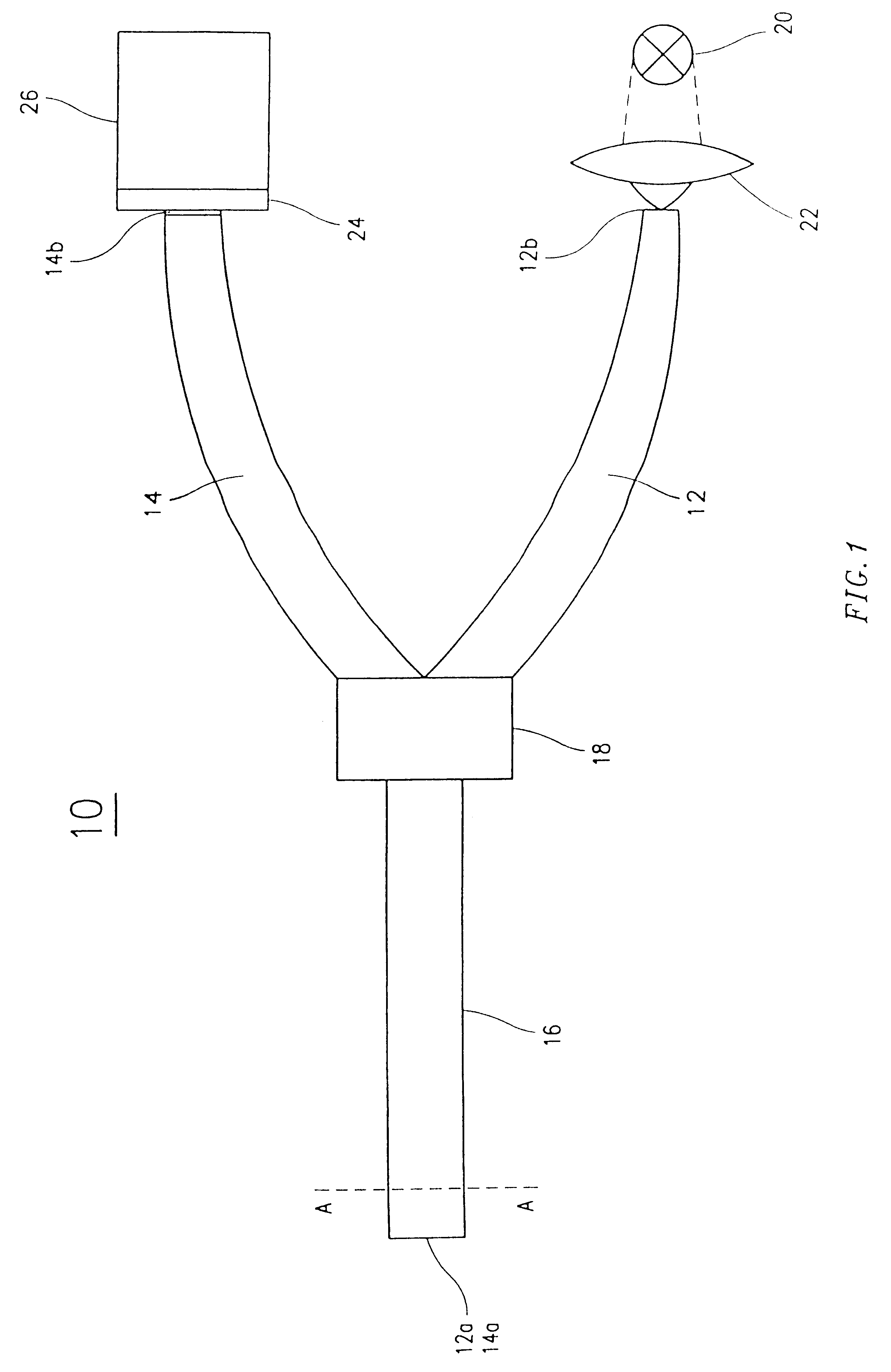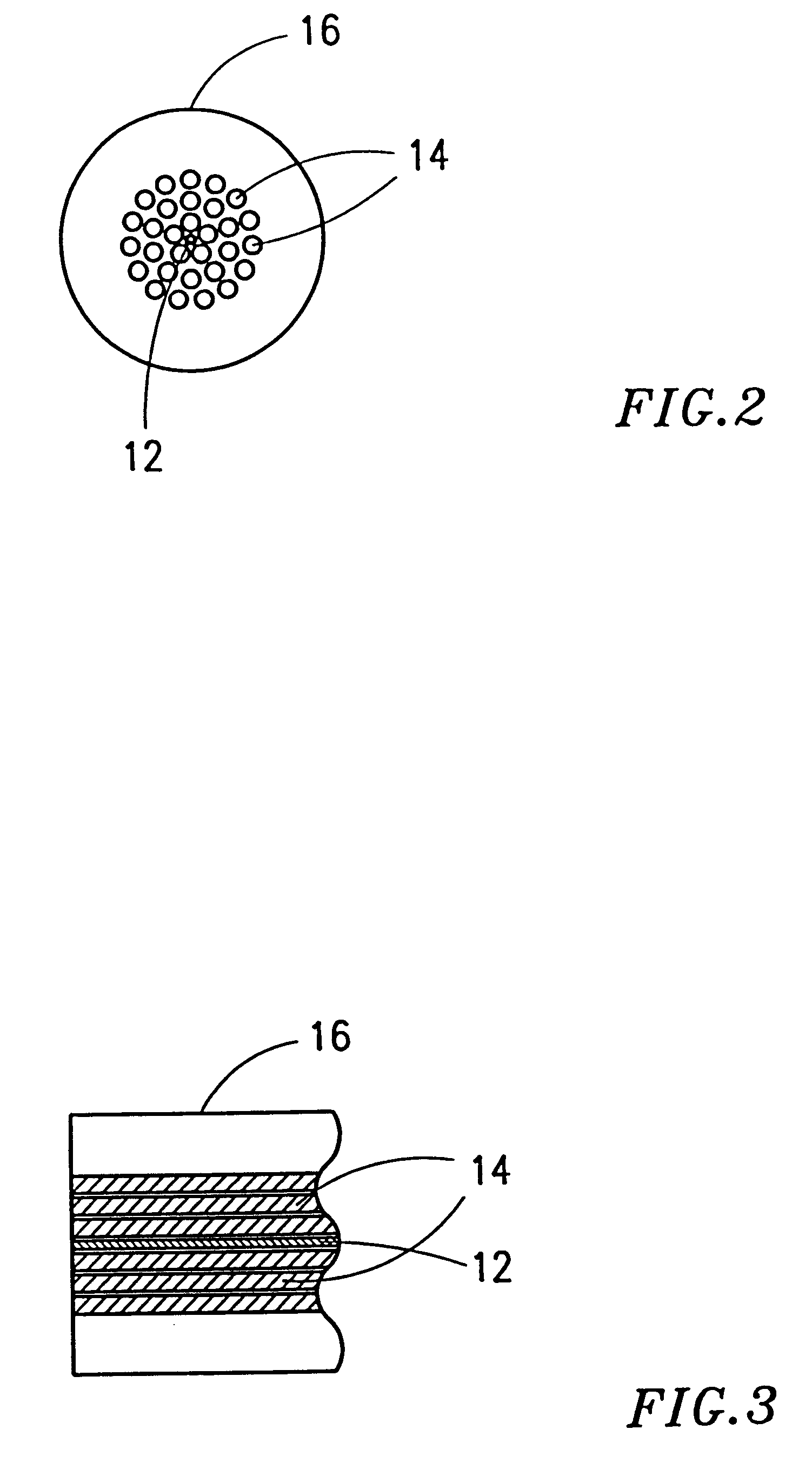System for reading photo-stimulated accumulative luminescent substances
a luminescent substance and photo-stimulated technology, applied in the field of photostimulated luminescence, can solve the problems of increasing the time required for exposure and development, time-consuming and expensive to first expose and then develop x-ray films, and increasing the cost of the whole arrangemen
- Summary
- Abstract
- Description
- Claims
- Application Information
AI Technical Summary
Benefits of technology
Problems solved by technology
Method used
Image
Examples
Embodiment Construction
FIG. 1 shows an arrangement 10 for reading photo-stimulable storage luminescent substances according to the present invention. The arrangement 10 comprises an excitation glass fibre 12 and a receiving glass fibre 14, one end 12a and one end 14a being arranged in close proximity to each other in a region which can be positioned near a photo-stimulable storage luminescent substance. In the region of the one ends 12a and 14a the excitation glass fibre 12 and the receiving glass fibre 14 thus form a common bundle 16, which is split into the receiving glass fibre 14 and the excitation glass fibre 12 at a crossover section 18. The other end 12b of the excitation glass fibre is positioned near a light source 20 by means of which light can be fed into the excitation glass fibre 12, which has a small numerical aperture, via a suitable lens 22.
The other end 14b of the receiving glass fibre, which has a large numerical aperture compared with the numerical aperture of the excitation glass fibre...
PUM
 Login to View More
Login to View More Abstract
Description
Claims
Application Information
 Login to View More
Login to View More - R&D
- Intellectual Property
- Life Sciences
- Materials
- Tech Scout
- Unparalleled Data Quality
- Higher Quality Content
- 60% Fewer Hallucinations
Browse by: Latest US Patents, China's latest patents, Technical Efficacy Thesaurus, Application Domain, Technology Topic, Popular Technical Reports.
© 2025 PatSnap. All rights reserved.Legal|Privacy policy|Modern Slavery Act Transparency Statement|Sitemap|About US| Contact US: help@patsnap.com



